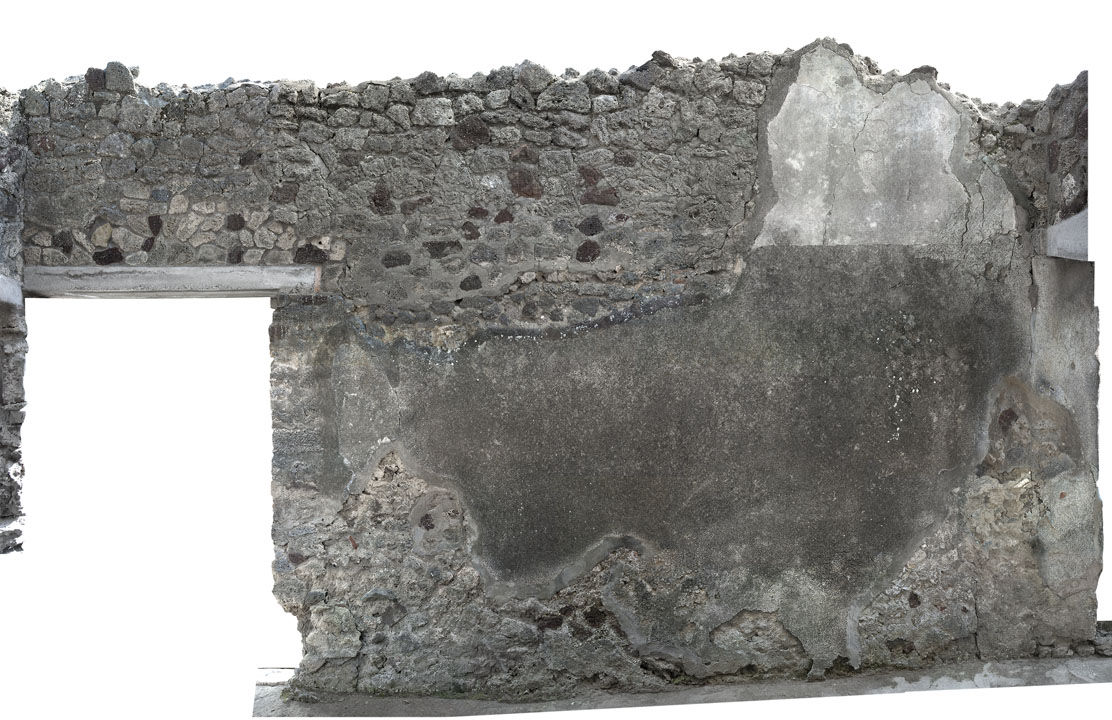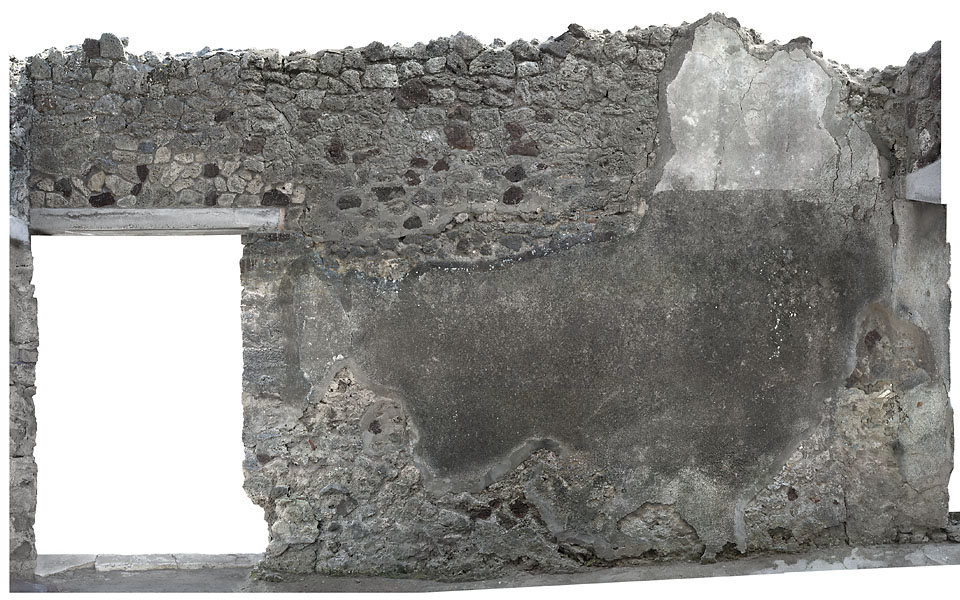South Wall
Description
Thomas Staub
S wall: width 7.30 m, max. preserved height 3.80 m. Door towards room f: 1.90 m wide, 2.45 m high. Above this door, and continuing westwards to 2.30 m distance from the south-west corner, above 2.40 m height, the wall is a modern reconstruction, underneath it is partly covered by modern concrete. Parts of the wall are covered by plaster: starting ca. 0.40 m east of the door to room f, between 1.10 and 2.00 m height, then rising up to between 0.60 and 2.40 m and then up to the complete height of the wall, with bare areas at the lower part of the wall. At 2.40 m height, a joint is visible in the plaster, separating the coarser plaster of the lower zone from the smoother one in the upper part. The western frame of the door towards room f (see room f, north wall) is partly repaired with modern concrete, at the bottom some parts are broken off. Above this, the frame is constructed of smaller blocks of mainly Sarno stone, but also of tuff and cruma. These blocks are between 0.20 x 0.13 x 0.12 m and 0.37 x 0.30 x 0.15 m (Sarno stone) large, partly stretching over the entire width of the opening. The height difference between the two blocks in one layer are evened out by bricks or thicker layers of mortar, and covered by concrete.
At the bottom of the frame, to the west of the broken off part, a later closed niche is visible in the wall, reminding of the niches typical for the places for clinae. The coating with yellow painted plaster is disappearing behind the filling rubble, which consists of greyish-yellow mortar with pieces of yellow tuff. The niche is 0.12 m deep and 0.53 m high, but could have continued under the actual floor level (cf. the remains of an earlier phase in the adjacent room g). It starts 0.45 m to the west of the frame and is cut off by the door.
The wall, where visible, is made of a mixed opus incertum, containing Sarno stone, lava, cruma and spoils of plaster, pavements and reddish mortar, all set into a yellowish mortar.


